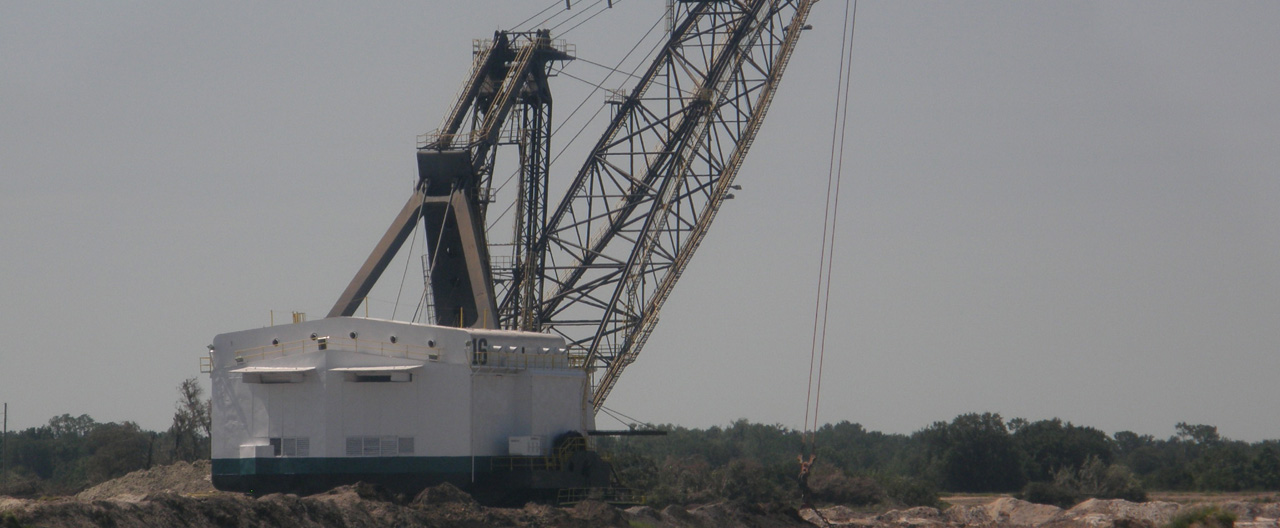Clay Settling Ponds
Clay is part of the matrix that phosphate companies mine. The matrix contains roughly equal parts of clay, sand and fluorapatite, a phosphate mineral. The finest particles of clay, sand and phosphate are separated in machines called cyclones during the first stages of beneficiation. They are suspended in a watery slurry, and pumped to large impoundment areas known as clay settling areas for natural settling. This clay is referred to as phosphatic clay.
A typical Florida phosphate mining operation pumps more than 100,000 gallons of water carrying tiny particles of clay every minute. This slurry is from 3% – 5% solids when it is pumped to a pond. As it settles, the clear top water is recycled for use in the beneficiation plant. Through research, methods have been developed to hasten the settling so that a top crust that is 50-60% solids forms in 3-5 years after the start of dewatering and reclamation. Beneath the crust, however, the clay is still the consistency of pudding, which limits the amount of weight the settling area can support. After several years the clay settling areas are only about 25% solids.
The phosphate industry leaves about 40% of the land it mines behind in clay settling areas. Research has proven that there are uses for the land, but the uses are limited by the properties of the clay that leave the settling areas unstable. There is a strong public desire to cut down on the number of settling areas created.
To do anything productive with the clay that is separated from the sand and the phosphate, however, the water content must be significantly lowered. Dewatering and consolidating the clay, which retains water, is easier said than done.
FIPR developed a process known as the FIPR-DIPR (Dewatering Instantaneously with Pulp Recycle) about 10 years ago and is again studying ways to make the rapid dewatering process economically feasible. Such a process could be a viable method to dry the clay quickly so it can be used. One use would be to plow it into Florida’s sandy soil and create a loam.
